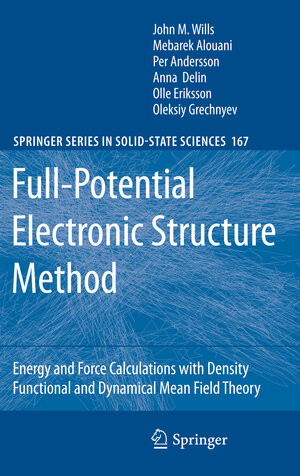
×
![Buchcover ISBN 9783642266249]()
From the reviews:
“The book describes the electron structure theory and its applications within the implementation by using the computer code for relativistic spin-polarized tests (RSPt). … the book presents a very interesting attempt to create a powerful electronic database of physical properties … . may be useful to students, post-graduate students, their teachers and researchers working in modern chemistry, physics and material sciences.” (I. A. Parinov, Zentralblatt MATH, Vol. 1217, 2011)Full-Potential Electronic Structure Method
Energy and Force Calculations with Density Functional and Dynamical Mean Field Theory
von John M. Wills und weiterenThis is a book describing electronic structure theory and application within the framework of a methodology implemented in the computer code RSPt. In 1986, when the code that was to become RSPt was developed enough to be useful, it was one of the ? rst full-potential, all-electron, relativistic implem- tations of DFT (density functional theory). While RSPt was documented p- asitically in many publications describing the results of its application, it was many years before a publication explicitly describing aspects of the method appeared. In the meantime, several excellent all-electron, full-potential me- ods had been developed, published, and become available. So why a book about RSPt now? The code that became RSPt was initially developed as a personal research tool, rather than a collaborative e? ort or as a product. As such it required some knowledge of its inner workings to use, and as it was meant to be m- imally ? exible, the code required experience to be used e? ectively. These - tributes inhibited, but did not prevent, the spread of RSPt as a research tool. While applicable across the periodic table, the method is particularly useful in describing a wide range of materials, including heavier elements and c- pounds, and its ? exibility provides targeted accuracy and a convenient and accurate framework for implementing and assessing the e? ect of new models.



